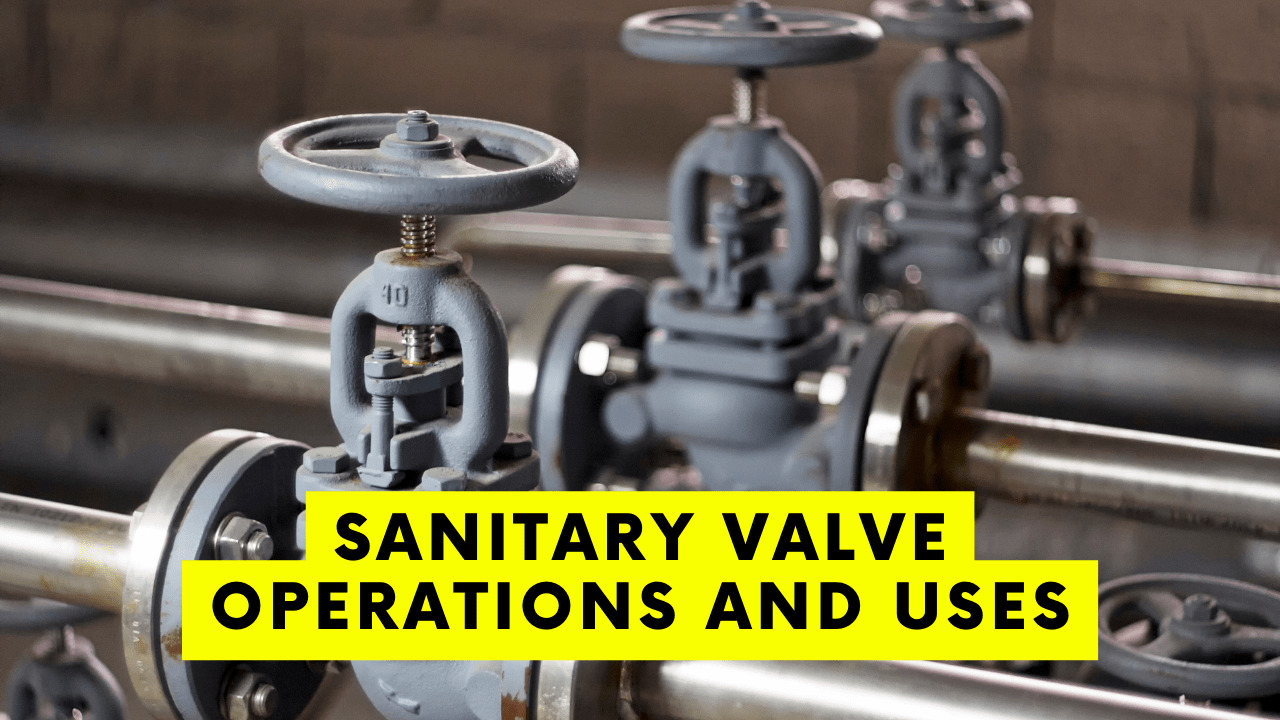Are you needing a sanitary valve but struggling to understand how they work?
Sanitary valves come in many shapes and sizes, which makes it confusing to know what would work best in your industry.
This guide explains the four main types of sanitary valves, so you can stop searching. Keep reading to find out how these valves work and the ways they are used in different applications.
Table of Contents
What Is a Sanitary Valve?
A sanitary check valve is used to prevent the backflow of substances through a passage. These valves meet specific health and safety standards, which makes them sanitary.
A sanitary valve’s sterile nature makes it useful for a variety of purposes. This includes certain industries that deal with food and medicine.
Where Is a Sanitary Check Valve Used?
The most common places you’ll find sanitary check valves include the following.
- Chemical processing
- Beverage and food industry
- Pharmaceutical manufacturing
There are many different types of sanitary valves that all have their variations. These variations make some more applicable in different uses.
The Sanitary Ball Valve
A stainless steel ball valve operates by using a ball and a hole. When the ball is facing the same direction as the pipe, liquid flows freely. When you rotate the ball so it is no longer in line with the pipe, the flow will cut off.
There are several variations of sanitary ball valves, but their operations are all the same.
The Sanitary Butterfly Valve
This type of sanitary valve has a very simple mechanism. It lacks any internal cavities that can cause a buildup of the product. The valve uses a butterfly disk, which rotates to open and close the pipe as necessary.
The butterfly valve makes it easy to control the flow of a substance, and it is compact and lightweight.
The Sanitary Plug Valve
The sanitary plug valve is an excellent device that allows for minimal pressure drops. Plug valves operate with a mechanism that rotates to open and close the valve.
During the action of opening and closing this kind of valve, there is no wear on the seal because it never makes contact with the body.
The Sanitary Rotary Valve
Sanitary rotary valves are simple and low-maintenance. Most rotary valves you can disassemble without tools, which makes cleaning and inspection easy.
The operations of this valve are conducted by a rotor that can open a pipe to let a substance move freely through it or close it to stop the movement.
The assembly of this valve is made to avoid any contamination and keep everything sterile.
Understanding the Sanitary Valves
The sanitary valve comes in many different forms. That’s why you should become familiar with all its different types and applications, so you know which one you need.
If you found this helpful, check out the rest of our site for more articles like this one!






